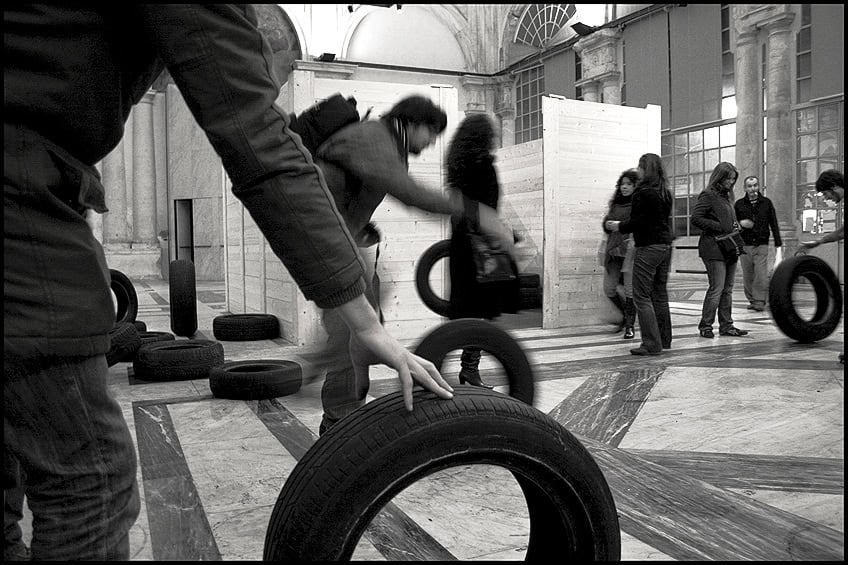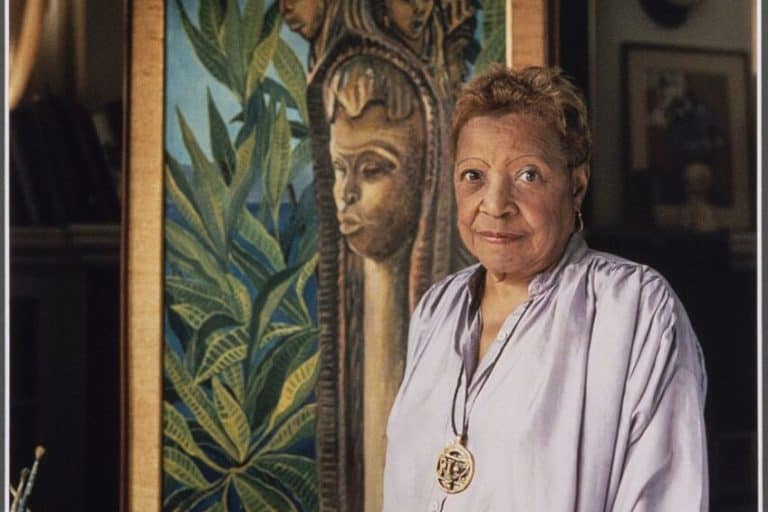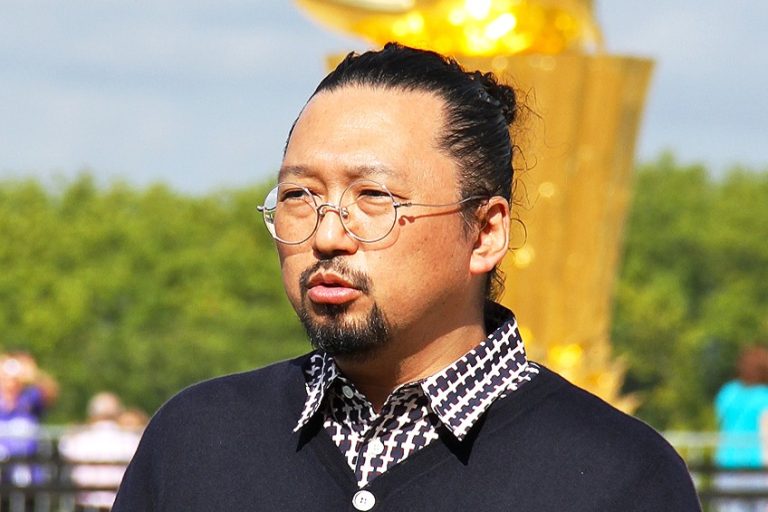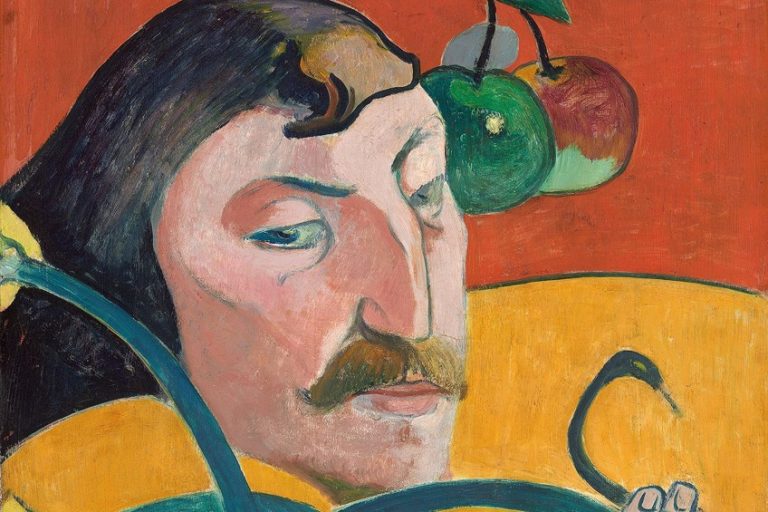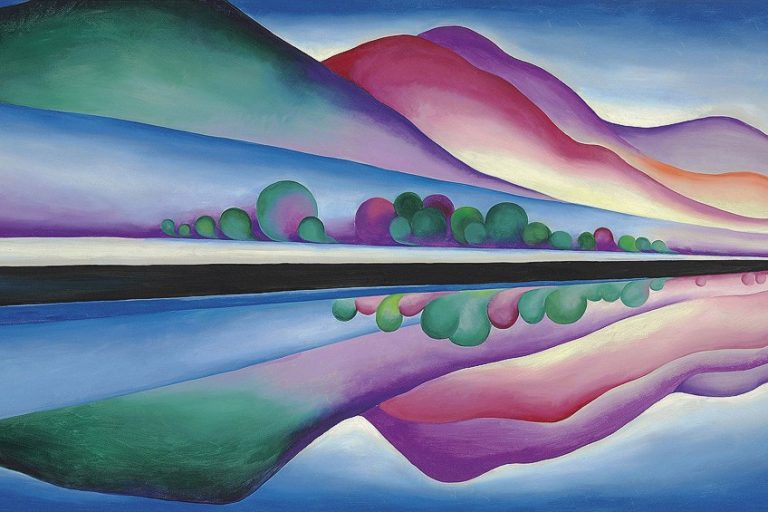Allan Kaprow – The Father of the Happening
Allan Kaprow, a pioneering figure in the realm of contemporary art, is best known for his groundbreaking contributions to the development of performance art and the conceptual art movement. Born in 1927, Kaprow’s innovative approach challenged traditional notions of art by blurring the boundaries between art and life. He coined the term “happening” to describe his immersive and interactive art events, which often involved audience participation and emphasized the ephemeral nature of artistic expression. Through his radical ideas and experimental practices, Kaprow profoundly influenced the trajectory of art in the 20th century, leaving behind a legacy that continues to inspire artists and provoke critical discourse on the nature of art itself.
Key Takeaways
- Allan Kaprow created “Happenings,” redefining performance art.
- His work blurred the lines between art and life.
- Kaprow influenced later movements and artists.
Early Life and Education
| Birth | August 23, 1927 |
|---|---|
| Death | April 5, 2006 |
| Place of Birth | Atlantic City, New Jersey, United States |
| Genre of Work | Performance art and Happenings |
Allan Kaprow was a pioneer in the world of performance art and environmental art. Born on August 23, 1927, in Atlantic City, New Jersey, he studied art history at Columbia University, where he began experimenting with new artistic forms. Kaprow’s efforts to challenge traditional art forms led to the creation of “Happenings,” which blended performance, art, and life itself.
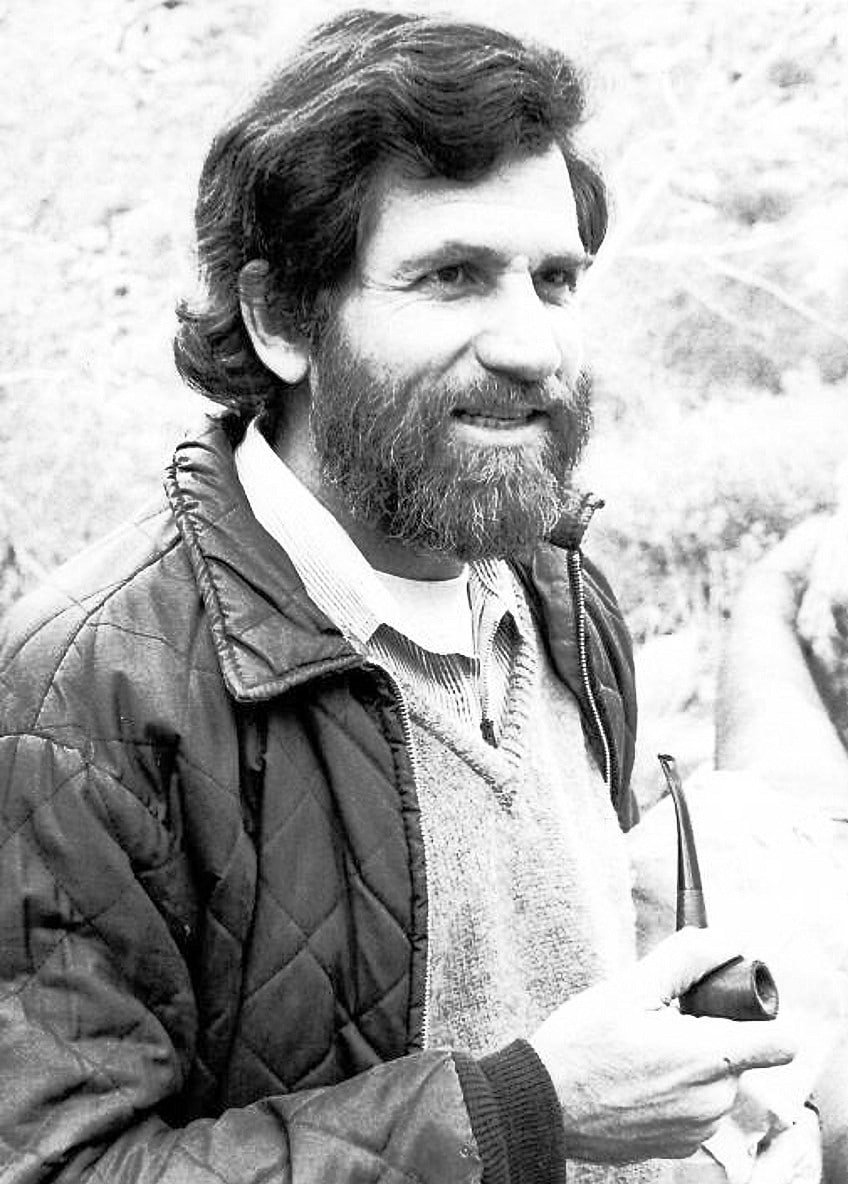
In the late 1950s and 1960s, Kaprow’s Happenings became a significant movement in the art world. These events broke the boundaries of conventional art by engaging the audience and incorporating everyday activities into the art. His innovative approach reshaped the landscape of how art could be perceived and interacted with. Kaprow’s impact extended beyond his lifetime, influencing artists and movements such as Fluxus and installation art.
His work and essays continue to be studied, providing valuable insights into the evolution of contemporary art.
Early Career
Kaprow attended high school in New York City at the High School of Music and Art. Here, he started honing his skills in drawing and painting. He then studied under the famous painter and art teacher Hans Hofmann, who is known for his influence on Abstract Expressionism. Hofmann’s rigorous training helped Kaprow build a strong foundation in the arts.
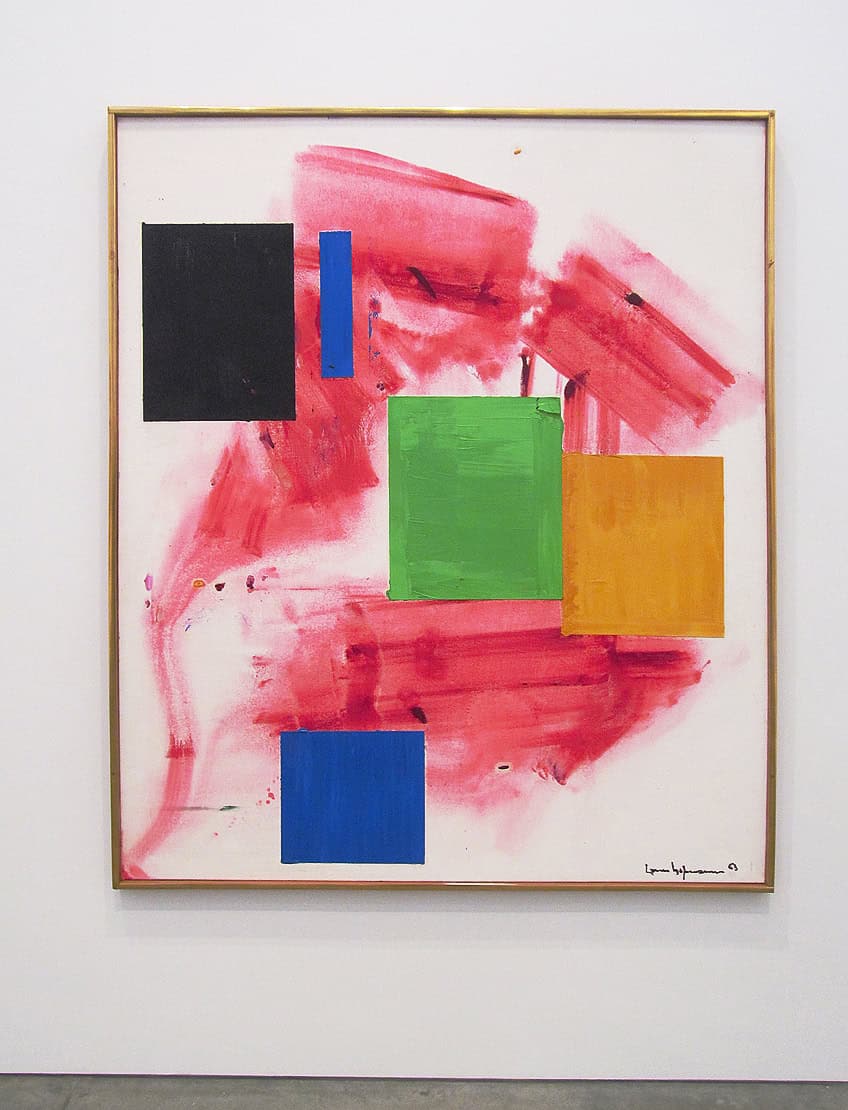
Following his time with Hofmann, Kaprow attended New York University (NYU) and studied with notable art historian Meyer Schapiro, who greatly impacted his understanding of art theory. Schapiro’s intellectual approach to art history fueled Kaprow’s interest in the theoretical aspects of art, setting the stage for his later work in performance and Happenings.
Mature Period
Kaprow continued his education at Columbia University, where he earned a Master’s degree in art history. His studies included coursework at the Pratt Institute, supporting his deepening exploration into modern art practices and theories. During this period, Kaprow began to shift his focus from traditional painting to experimental art forms.
He became interested in how art could intersect with everyday life.
This led to the development of “Environments” and “Happenings,” non-linear and spontaneous performances that would define his career. His mature work blurred the lines between art and life, emphasizing the importance of viewer participation.
Later Period
Later in his career, Kaprow moved to an academic role, teaching at institutions including Rutgers University. His influence continued to grow as he shared his avant-garde ideas with a new generation of artists. Kaprow’s later works remained experimental and often involved ordinary activities, reflecting his belief that art should emerge from real-life experiences.

Kaprow’s theoretical work, combined with his innovative performances, left a lasting imprint on contemporary art. He spent his final years in California, where he continued to develop his ideas and teach until his passing in 2006. Kaprow’s legacy lives on through his contributions to performance art and education.
Artistic Theory and Philosophy
Allan Kaprow’s artistic theory and philosophy centered on the idea of “Happenings,” which blurred the lines between art and life. His ideas were influenced by his academic career, his teachers, and his belief in audience participation.
Academic Career
Allan Kaprow studied at the High School of Music & Art and New York University. He later attended Columbia University, where he earned a Master’s degree in art history. His time in New York exposed him to the Abstract Expressionist movement. Kaprow’s exposure to diverse art forms during his education played a critical role in shaping his future works.
He also taught at several universities, sharing his ideas about integrating art with everyday life.
Influences and Teachers
Kaprow was greatly influenced by his teachers, especially John Dewey, who promoted the idea that art should be an experience involving both the artist and the audience. Jackson Pollock’s action painting also had a significant impact on him. Pollock’s techniques encouraged Kaprow to consider the physical process of creating art. He saw art as a dynamic experience rather than a static object.

Blurring Art and Life
Kaprow believed in dissolving the boundaries between art and everyday life. His essay, The Legacy of Jackson Pollock, articulated this idea. He argued that art should be spontaneous and participatory. He created “Happenings,” which were events involving the audience in the art-making process.
These events took place in unconventional spaces, making everyday actions part of the artistic experience.
Interactivity and Audience Participation
Kaprow’s “Happenings” required active audience participation. This shifted the role of the spectator to that of a participant, breaking down the traditional barriers between artist and audience. His works emphasized collective creativity and interaction, turning spectators into co-creators.
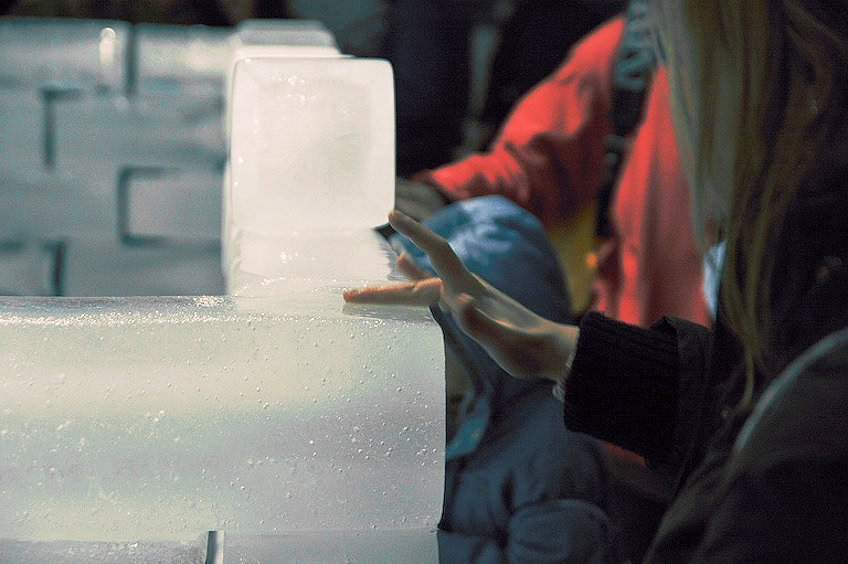
This approach promoted a deeper connection between the participants and the artistic process, making each event unique. Kaprow’s philosophy was a significant departure from traditional art, focusing on the experiential and participatory aspects. His approach influenced future generations of artists and contributed to the development of performance and interactive art.
The Happenings and Their Development
Allan Kaprow’s “Happenings” emerged as groundbreaking performance art in the late 1950s and 1960s. These events emphasized spontaneous, participatory actions over traditional art forms, drawing significant influence from John Cage’s experimental approaches.
Definition of Happenings
Happenings are performance events that focus on the interaction of participants within a structured setup. Allan Kaprow coined the term and designed these events to challenge the boundaries of traditional art. Participants engaged in unscripted, spontaneous actions that blurred the lines between the artist and the audience. These performances were often held in non-traditional venues such as the Reuben Gallery and Judson Gallery. Unlike conventional theater, Happenings had no clear narrative. They emphasized the process of creation over the final product, reflecting the dynamic nature of art and life.

Notable Works
One of the most famous pieces by Kaprow is 18 Happenings in 6 Parts, performed in 1959 at the Reuben Gallery. This event involved a series of interconnected activities across six rooms, engaging the audience in a multi-sensory experience.
Another significant work is Eat, staged in 1964 at the Smolin Gallery. This piece involved participants eating and playing with food in a communal space, highlighting everyday actions as art.
Yard (1961) is another renowned Happening. It featured a chaotic installation of used car tires, inviting audiences to navigate and interact with the environment. These pieces demonstrated Kaprow’s innovative approach, where art was lived and experienced rather than merely observed.
Influence of John Cage
John Cage, an avant-garde composer, had a profound impact on the development of Happenings. His 1952 event at Black Mountain College is often seen as a precursor to Kaprow’s work. Cage’s emphasis on chance operations and indeterminacy helped shape the philosophy behind Happenings.
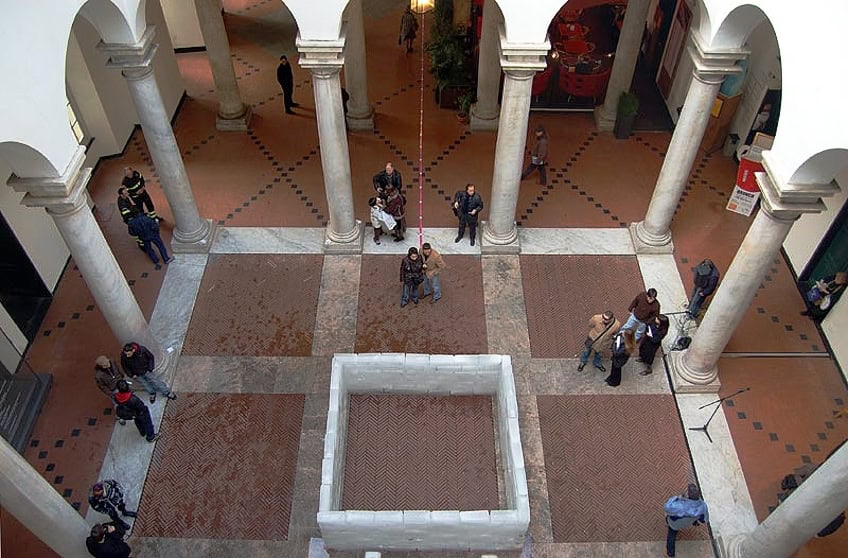
Kaprow took Cage’s ideas further, integrating them into his performances. Cage’s concept of “happening” allowed for greater spontaneity and participant involvement in art. Cage’s class on experimental composition influenced Kaprow’s inclusion of sound and ambient noise in his works. This integration expanded the sensory dimensions of Happenings, making them a holistic experience.
Later Career and Impact
Allan Kaprow’s contributions to art extended well into his later years, impacting numerous artists and art forms. His teaching, innovative contributions to art theory, and ongoing legacy remain influential.
Teaching and Influence
Kaprow was an influential educator who taught at several universities, including Rutgers University and the University of California, San Diego. His teaching style encouraged students to explore unconventional modes of expression.
He emphasized the importance of process over product. This perspective encouraged artists to focus on the experience of creating art rather than the final outcome. By mentoring and influencing several generations of artists, Kaprow helped shape a more experimental and process-oriented approach to art.
Lasting Contributions to Art
Kaprow’s most significant contribution lies in his development of “Happenings” and later “Activities.” Happenings were performance events that broke down the boundaries between art and life, incorporating audience participation and improvisation.
His shift towards Activities in the 1970s placed even greater emphasis on everyday actions and interactions.
These pieces blurred the lines between art and daily life, encouraging viewers to perceive art in their everyday surroundings. Kaprow’s theories on art-making have been influential in contemporary performance and conceptual art. His work continues to be a reference point for artists exploring experiential and participatory practices.
Legacy of Allan Kaprow Today
Kaprow’s legacy persists through ongoing re-enactments of his Happenings and Activities. Artists and institutions continue to revisit and reinterpret his work, highlighting its relevance in contemporary art discourse. Exhibitions, academic studies, and publications have kept his ideas alive, ensuring that new generations encounter his innovative approaches.

Key institutions and universities maintain archives of his works and writings. Kaprow’s impact on art has also influenced how audiences engage with and experience art. His challenges to traditional art forms opened up new possibilities, making his contributions enduringly significant.
Allan Kaprow’s legacy as a visionary artist and thinker is indisputable. His pioneering concepts of happenings and environmental art not only challenged traditional artistic boundaries but also paved the way for a new era of interactive and participatory art forms. Kaprow’s emphasis on the integration of art and life continues to resonate in contemporary art practice, influencing generations of artists to explore the fluidity of artistic expression and the dynamic relationship between artist, artwork, and audience. As we reflect on his contributions, it becomes evident that Kaprow’s radical ideas and experimental spirit have left an indelible mark on the trajectory of art history, reminding us of the endless possibilities inherent in the ever-evolving landscape of artistic creation.
Frequently Asked Questions
What Are Some Notable Examples of Happenings by Allan Kaprow?
One notable example of Kaprow’s Happenings is 18 Happenings in 6 Parts (1959). This event, held in New York’s Reuben Gallery, engaged the audience in a series of actions. Another significant work is Fluids (1967), where he and volunteers built and melted structures made of ice.
How Did Allan Kaprow’s Work Influence the Development of Installation Art?
Kaprow’s innovative approach blurred the line between art and life, encouraging audience participation. His use of everyday materials and environments paved the way for later installation artists to explore immersive and interactive experiences.
What Cultural Movements or Events Influenced Allan Kaprow’s Artistic Approach?
Kaprow was heavily influenced by Dada and Surrealism. These movements’ focus on unpredictability and breaking traditional art forms inspired his own experimental and dynamic methods. Additionally, the rise of Abstract Expressionism during his formative years contributed to his emphasis on action and process over static objects.
Isabella studied at the University of Cape Town in South Africa and graduated with a Bachelor of Arts majoring in English Literature & Language and Psychology. Throughout her undergraduate years, she took Art History as an additional subject and absolutely loved it. Building on from her art history knowledge that began in high school, art has always been a particular area of fascination for her. From learning about artworks previously unknown to her, or sharpening her existing understanding of specific works, the ability to continue learning within this interesting sphere excites her greatly.
Her focal points of interest in art history encompass profiling specific artists and art movements, as it is these areas where she is able to really dig deep into the rich narrative of the art world. Additionally, she particularly enjoys exploring the different artistic styles of the 20th century, as well as the important impact that female artists have had on the development of art history.
Learn more about Isabella Meyer and the Art in Context Team.
Cite this Article
Isabella, Meyer, “Allan Kaprow – The Father of the Happening.” Art in Context. July 11, 2024. URL: https://artincontext.org/allan-kaprow/
Meyer, I. (2024, 11 July). Allan Kaprow – The Father of the Happening. Art in Context. https://artincontext.org/allan-kaprow/
Meyer, Isabella. “Allan Kaprow – The Father of the Happening.” Art in Context, July 11, 2024. https://artincontext.org/allan-kaprow/.


